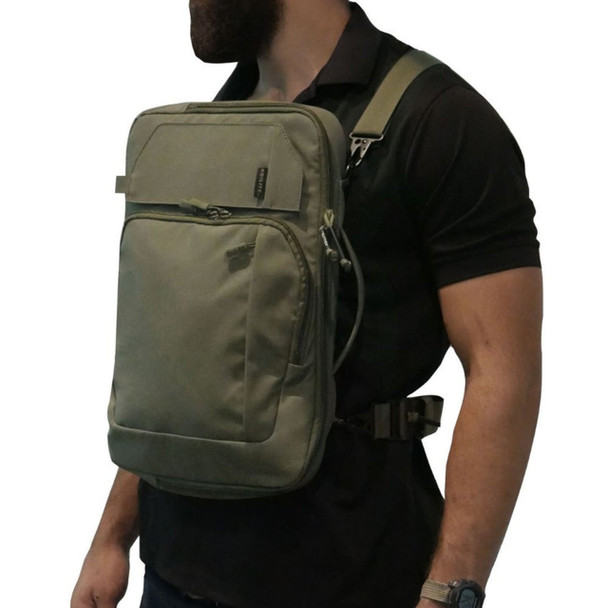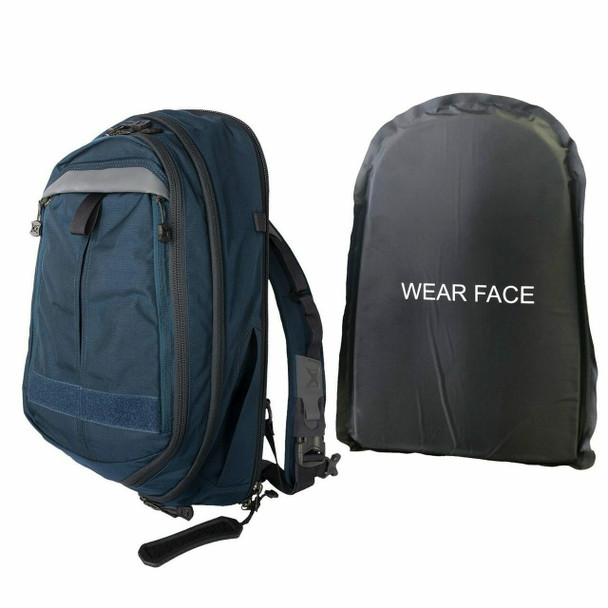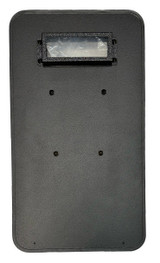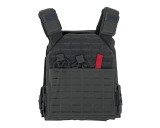Best Backpack Armor
Best Backpack Armor
In the modern world you never can tell if or when something goes terribly wrong. Be prepared! Ensure safety of your loved ones and yourself. The armored bullet-resistant backpack can be a life-saving device if chosen properly. In this article we explain everything you need to know about backpack armor, and recommend some proven models to purchase. Stay tuned!
What is backpack armor in the first place?
Backpack armor is a type of body armor that looks like (and actually is) a backpack but contains a special ballistic panel that is able to stop or reflect bullets. In layman’s terms, backpack armor is a bullet-resistant backpack that protects you from gun shots, ricochets and projectiles.
Let’s make it clear from the start: purchasing backpack armor is totally legal in the U.S. There are no any regulations of this matter, at least for now. This makes such bullet-resistant backpacks a great option to ensure additional safety for you or for your kids if one of you unluckily finds herself in the center of some massive shooting, civil unrest episodes, or in a crime-ridden neighborhood.
Technically, there are two form-factors of backpack armor.
- All-in-one backpack armor. That is, a specially design backpack with a sewn or removable ballistic panel within, sold as a set.
- A normal (that is, civilian) backpack with an armor panel purchased individually and inserted to the backpack.
Each option has its pros and cons. For instance, the factory backpack armor (often referred as a bulletproof backpack in advertising) comes not only with NIJ certificates for the armor panel, but is typically tested as a whole including QA tests. So buying such backpack armor is a sure way to purchasing a quality product.
Also, the tactical backpack armor was intentionally designed to hold a bullet-resistant panel in it, so you don’t have to look where to place it – which is a common issue with many commercially available “civilian” backpacks.
On the other hand, purchasing a backpack and the armor separately allows you to put the same ballistic panel to almost any bag, backpack or briefcase. Versatility!
What are typical usage scenarios for backpack armors?
Backpacks are extremely popular among very different audiences. It seems that almost everyone wears them: students, teenagers, servicemen, office workers, photographers, couriers and so on. However, the most common use case for the armored backpack is, of course, in school.
Parents who are afraid of shooting incidents, often buy armor backpacks to their kids. And who can blame them for that? Certainly, not me. Yes, statistically, chances you will be shot in such a violence incident are thin. Much more people die each year in car accidents. But some overpreparation never hurts, especially when it comes to health and wellbeing of your children.
Other common scenarios include:
- Public places that can possibly become a target of terrorist attacks or just violence. Examples are transport nodes and stations, government offices, embassies and so on. If you work in one of such organizations or plan to visit it soon, you may want some additional safety for you. Potentially dangerous places like shooting ranges or offices of controversial organizations may also need backpack armor as necessary equipment.
- Actors, celebrities and controversial public figures may need protection during tours and meetings with fans. Yes, they usually hire security guards for that, but you never know.
- Casual use. Even if you do not plan visiting risky places in the near future, a backpack is still a backpack. Just put in everything you need to go and insert a bulletproof panel as well. Knowing your back is covered is priceless, after all.
Does backpack armor really protect from shots?
Before we answer this question, let’s say a few words about the NIJ standard.
The National Institute of Justice or NIJ establishes a number of safety rankings and develops standards various armor (from body armor to helmets and armor backpacks) must meet in order to confirm a certain rank. If the armor can withstand a certain number of rounds shot from the specific weapon with the specific ammo, it is certified as the certain protection level.
Currently, there are six protection levels:
- Level 1
- Level 2A
- Level 2
- Level IIIA
- Level III
- Level IV
The earlier NIJ level 1 is rarely used now, and basically does not provide enough protection to take it into account seriously. We just pretend you never heard of this Level 1 protection, ok?
So let’s take a closer look at Level IIA to IV NIJ protection levels to see what kind of protection they provide.
NIJ Level IIA protection
According to the NIJ standard, the armor certified as Level IIA should stop 9 mm bullets and .30 S&W FMJ bullets. This means that backpack armor with NIJ Level 2A certification can protect from many pistol shots, which is good provided pistols are one of the most common firearms on the street.
NIJ Level II protection
Level II is a revamped version of the earlier standard which adds more protection under almost the same weight of the armor. Particularly, Level II bullet-resistant armor can reliably stop .357 Magnum shots. Very nice if you ask me, provided that the difference in cost is negligible.
NIJ Level IIIA protection
Now, here is a serious player. Level IIIA gives the bare minimum defense you want from the body armor (and backpacks armor IS body armor too). Why is so? Because in addition to above mentioned pistol rounds, NIJ Level IIIA armor can protect its wearer from pistol rounds including .357 magnum, .357 SIG. This means that Level IIIA defends against 90% of firearms that you can meet in shooting incidents. At the same time, its weight is rather low, so wearing such armor backpack won’t result in much discomfort.
NIJ Level III protection
If you want more safety, look for NIJ Level III backpacks. NIJ Level III ballistic panels are tested against rifle shots too. Even 7.62x39 mm FMJ are not a problem for this type of armor. It also withstands .223 Remington rounds. And these two are the most common rifle rounds. So if your backpack is equipped with a Level III panel, you are protected as good as you can for that amount of money spent.
NIJ Level IV protection
Level IV certified armor is designed to stop armor piercing rounds. Literally: this is armor against rounds that ignore armor. Such armored backpacks can stop armor piercing ammo, namely… well, never mind. A Level IV backpack is a huge overkill for the above mentioned scenarios. If you aren’t Pablo Escobar, no one will hunt you down with a sniper rifle loaded with armor piercing rounds.
Non-standard ranks
Aside from NIJ certified rankings, there are some industry standards too. Manufacturers often guarantee additional protection of the armor above the certified amount. Such non-standard ranks are labeled differently, for example: Level IIA+, Level III+ and so on. Sometimes, this is a good option to buy: for a decent price you get the certified protection level plus some additional stopping power against more energetic bullets not covered by the standard.
Here is what you should know about backpack armor (before you buy one)
Below are several important things you should always remember.
Bullet-resistant, not bulletproof
While armor backpacks are often referred as bulletproof backpacks, in reality they are not. Once again: your armor backpack is NOT bulletproof, just bullet-resistant. You should never rely on your backpack as the only measure of safety. You are not invincible. The backpack does not make bullets reflect from you. Take care.
It hurts
Even when the backpack stops the shot, the energy of the bullet dissipates over a larger area, but that still hurts. It feels like a strong hit and may leave injuries and produce shock. Even that damage may be enough for people with some serious health disorders to fall unconscious or even to provoke some fatal health state.
Teach your kids to cover behind the backpack
When you wear the backpack on your back, it obviously protects your back only. The entire front part of your body and your sides are still vulnerable! That is why it is important to instruct your kids to take off the backpack, and take cover behind it. A kid may crouch or lay down so to get the maximum coverage. Spend some minutes at home to train this.
Strike side faces backwards
If you purchase the backpack and the armor panel separately, make sure to insert the ballistic panel the correct side facing backwards. Typically, there is a label on it saying “This is a strike side” or something like that. The strike side must face backwards, not your back.
Use only as a temp coverage
And again: do not rely on your armor backpack as the only source of safety. Find better coverage as soon as possible. Use your backpack only as a temporary measure. If you can leave the shooting site safely – do this.
Do not tell anyone
You really should not tell everyone you meet that your backpack has a “secret”. Make sure your kids understand this too and do not share this information with other people. If wild shooting begins with everyone panicking and poorly controlling themselves, someone may desperately attempt to take the armor backpack from your kid to protect themselves.
Maintenance and care
Like every other piece of armor, armor backpack need to be maintained.
- Avoid high temperatures. High temperatures lead to degeneration of armor’s protection properties.
- Do not leave the armor on the sun. Never leave the armor backpack lying in a car seat on a sunny day for a long time.
- Store the armor as instructed. If the instruction tells to store it horizontally, do not hang the backpack.
- Keep it in a dry place. Excessive moisture is also damaging to armor.
Also, every armor panel has a certain lifetime, typically 3 years, but no more than 5 years total (depends on the model). You must not use expired armor backpacks, because they cannot reliably protect you anymore. Do not purchase used armor panels and backpacks, because you cannot be sure the armor’s warranty period has not expired. And if the used armor was once shot, its protection properties were compromised. Wearing such armor can be dangerous!
Here are some best picks of backpack armors
Let’s review some good models of backpack armors.
Ballistic Backpack Level 3A by Battle Steel®️
This lightweight NIJ certified Level IIIA backpack armor ensures both safety and comfort. Many compartments and external mesh make sure you can take everything you need with you, and a 10x15 ballistic panel will play a key role in stopping bullet threats.
The backpack conveniently comes in three colors to match your style. And the price is under $100 which is a good deal for the tactical backpack armor. Our recommendations go to this model.
Flexible Armor Level 3A+ Enhanced Protection 11x18 by Battle Steel®️
This individual ballistic panel fits almost any backpack, briefcase or laptop bag. Certified as NIJ Level IIIA it offers some additional protection guaranteed by the manufacturer. With extremely low weight below 2 lbs, flexible profile and superior protection thanks to 40 layers of UHMWPE (typical 3A armor has only 30 layers) this armor panel is a great option to consider when you need to put in some tough protection to the backpack.
This model comes with 8 years warranty, and is made 100% in the U.S.A. Two thumbs up!
Recent Posts
-
Understanding Ballistic Shield Ratings and Their Applications
The Trusted Name in Tactical Defense - BattleSteel® When it comes to protecting those who protect us …2025-04-19 -
The Importance of Hearing Protection in Tactical Environments
The Legacy of BattleSteel® BattleSteel® is a trusted name in the world of tactical defense equipment …2025-04-14 -
How to Properly Fit and Wear a Plate Carrier
About BattleSteel and Their Mission BattleSteel is a trusted name in the tactical gear industry, ren …2025-04-11




